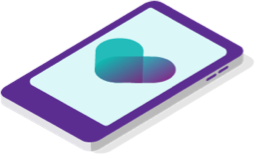Have you been diagnosed with prediabetes? Approximately one in three American adults—or 88 million people—have prediabetes, according to the Centers for Disease Control and Prevention. Among these people, many are unaware that they have the condition.
Having prediabetes increases your risk of developing type 2 diabetes later in life. Many people with prediabetes will be diagnosed with type 2 diabetes within 10 years. Fortunately, diet and lifestyle changes can greatly reduce your chances of developing diabetes. If your doctor has told you that your blood sugar is high or that you are pre-diabetic, take steps now to lower your blood sugar and reduce your risk.
What Is Prediabetes?
Prediabetes is a condition in which blood sugar levels are higher than normal, but are not high enough to be considered diabetes. A normal blood sugar range is 70 to 99 mg/dL. If your blood sugar is between 100 and 125 mg/dL, you may have diabetes. A fasting blood glucose above 125 mg/dL likely indicates diabetes.
Diabetes is a chronic disease that can lead to many serious side effects. Diabetes is associated with heart disease, nerve damage, kidney disease, eye damage, and slow wound healing. It increases the risk of stroke, high blood pressure, cataracts, infection, kidney failure, limb amputation, and even death.
Eating a healthy diet is one of the most effective ways to control your blood sugar levels. Continue reading to learn what to eat—and what not to eat—if you have prediabetes.
What to Eat
The most important thing to remember when managing your blood sugar is to pay attention to the amount of carbohydrates in your diet. Carbohydrates are a type of macronutrient that includes sugar, starches, and fiber. When you eat carbohydrates, your body breaks the food down into sugar, which enters the bloodstream. When you eat a lot of carbs, your blood sugar goes up.
That doesn’t mean you should avoid all carbohydrates. The body uses carbs for energy. Some carbs, however, are digested and absorbed more slowly, and thus they have less of an impact on blood sugar. When choosing foods containing carbohydrates—which include vegetables, fruit, grains, and legumes—try to select complex carbs rather than simple carbs.
Vegetables
When choosing vegetables, opt for nonstarchy vegetables and leafy greens. Foods such as broccoli, cauliflower, Brussels sprouts, zucchini, bell peppers, spinach, kale, onion, green beans, celery, and eggplant are all good options if you are trying to manage your blood sugar. They’re also full of many important nutrients and antioxidants that can help lower your risk of disease.
Fruit
Many fruits are naturally high in sugar, so choose fruits that are lower in carbs. Berries are an excellent option. Oranges, mangoes, peaches, cherries, and melons are also good choices.
Grains
When eating grains, choose complex carbohydrates such as whole grains, barley, and brown rice.
Legumes
Legumes include beans, peas, and lentils, all of which are rich in calcium and other important minerals. Research has found that eating more legumes can help improve blood sugar control and reduce the risk of heart disease.
Nuts and Seeds
Nuts and seeds, such as almonds, cashews, walnuts, pumpkin seeds, macadamia nuts, chia seeds, and sunflower seeds, may provide some protective effects for people with type 2 diabetes. Research has shown that eating five servings of nuts a week helped lower the risk of heart disease and death among 16,000 study participants with type 2 diabetes. Try to keep nuts on hand to eat as snacks, or add seeds to salads and stir-fries.
Meat and Eggs
Meat and eggs do not contain carbohydrates and, thus, do not impact blood sugar. They are good sources of protein, which should be included in every meal. Aim to get 10–35% of your total calories from clean sources of protein.
Foods to Avoid
If your blood sugar is high, you will want to avoid foods that cause your blood sugar to increase. These include simple carbohydrates and sugar in all of its forms. Avoid soda, candy, cookies, baked goods, white bread, and highly processed foods, all of which are high in sugar.
Sugar is also often added to many foods that may seem healthy, such as yogurt and salad dressing. Get into the habit of reading food labels, and try to avoid foods that contain added sugar. Instead, look for other forms of sweeteners that do not have the same impact on blood sugar levels, such as stevia, monk fruit, and sugar alcohols such as erythritol and xylitol.
Look for alternatives to some of the high-sugar foods you eat or drink most often. For example, drink flavored sparkling water instead of soda. Try dark chocolate for dessert instead of sugary candy or baked goods. Eat spaghetti squash instead of pasta. The ScriptSave WellRx app can help you find healthier alternatives in the supermarket. Simply scan the barcode on any food package to reveal its WellRx Health Index and discover “better for you” alternatives. Download the app on the App Store or Google Play to get started.
Karen Eisenbraun is a Certified Holistic Nutrition Consultant. She holds an English degree from Knox College and has written extensively about topics related to holistic health, clinical nutrition, and weight management.
Resources:













 Store & manage your medication list
Store & manage your medication list Medication pricing updates
Medication pricing updates Pill & refill reminders
Pill & refill reminders Medication journal & mood log
Medication journal & mood log